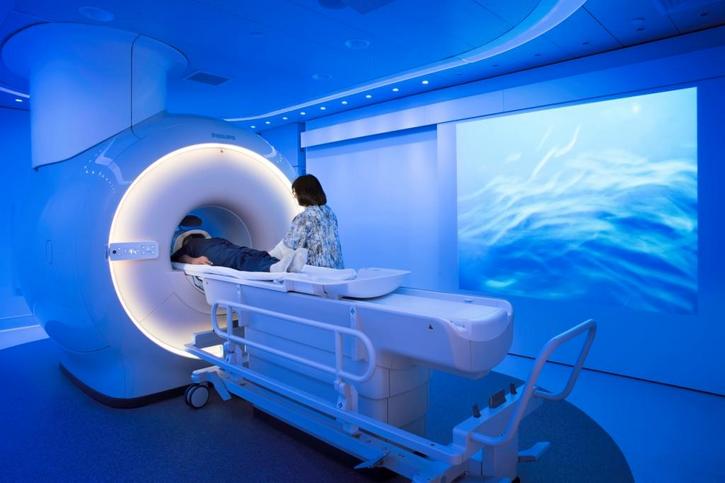DANVERS, Mass. — Beverly Hospital in Beverly, Massachusetts, is changing the MRI experience for its patients. It is the first hospital in the country that has an MRI machine which allows patients inside the MRI (or in-bore) an ambient experience. This state-of-the-art technology positions a video screen outside the MRI, while a mirror attached to the headgear lets patients focus on what’s playing on the screen instead of worrying about the exam, giving the sensation of more room, as well as a visual distraction.
This new MRI features the latest advancements in diagnostic imaging coupled with a relaxing, comfortable, patient-friendly environment proven to reduce anxiety. The new MRI, which is located at Lahey Outpatient Center, Danvers, Massachusetts, is designed to occupy patients with an immersive viewing experience combined with sound and lighting.
The In-Bore Ambient Experience MRI Suite provides patients with an interactive experience, allowing them to choose from various video themes that integrate soothing music, lights and imagery both in the room and inside the machine. Inside the machine there is a mirror, which allows patients to watch a screen mounted behind the MRI.
MorrisSwitzer~Environments for Health designed the space, working closely with Beverly Hospital and technology engineers to fully understand the unique architectural, engineering and construction challenges for the technology and to create a calming patient experience. For example, rounded corners make the room feel larger, and equipment and supplies are hidden behind a wall in recessed storage, all to create a more soothing environment where technology and patient comfort intersect.
The benefits of the Ambient Experience MRI include:
- An interactive patient experience – patients can choose from a variety of video themes before they enter the scanner room
- A multidimensional theatre effect with lighting, sound and video projection capabilities, even while the patient is in the scanner
- A wider opening and shorter bore, providing substantially more space than a traditional MRI
- More vertical space than an “open” bore scanner
- Advanced noise reduction technology
- Much faster scanning time
- The ability to scan patients feet first for 70 percent of all exam types so their head is outside the scanner
- A weight limit of 550 pounds, to better serve bariatric patients











